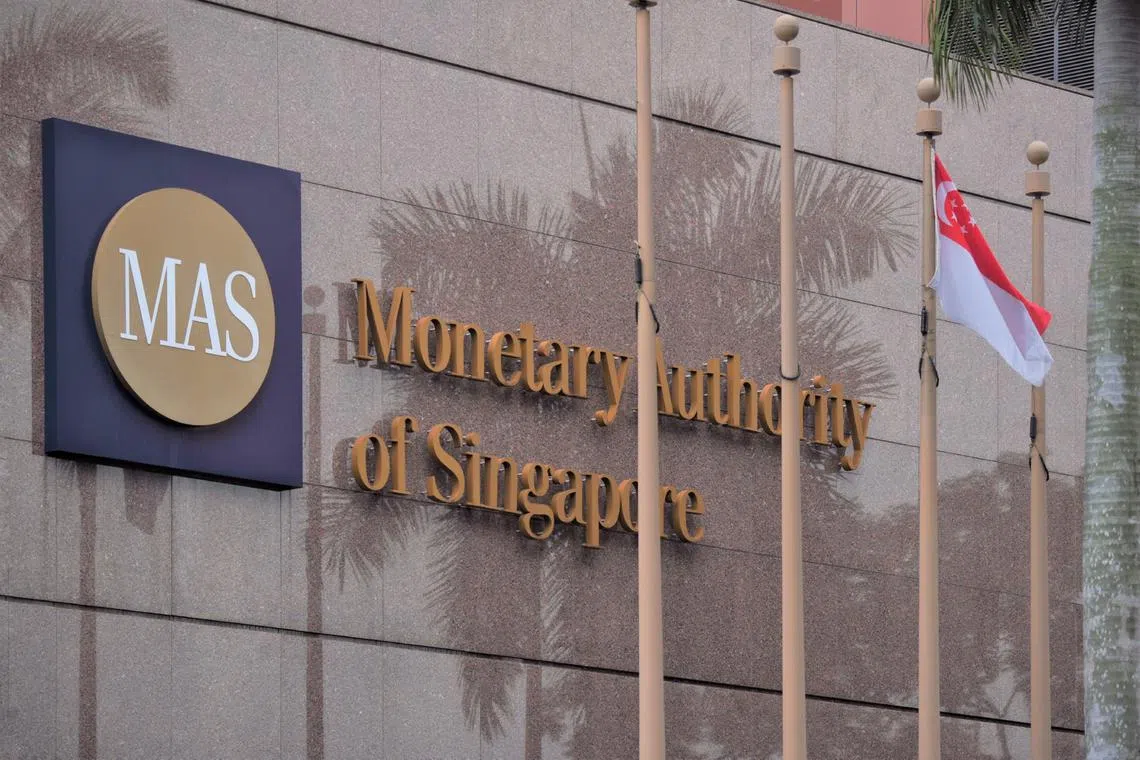Singapore-US trial to speed up cross-border payments shows blockchain viability
Sign up now: Get ST's newsletters delivered to your inbox

The trial of distributed ledger technology was jointly conducted by the Monetary Authority of Singapore and the Federal Reserve Bank of New York.
PHOTO: ST FILE
Follow topic:
SINGAPORE – Distributed ledger, a blockchain-inspired technology, can be used to execute more efficiently cross-border payments that involve multiple currencies, an experiment jointly conducted by the central banks of Singapore and New York has found.
Details of the technical research experiment, dubbed Project Cedar Phase II x Ubin+ (Cedar x Ubin+), were revealed in a report on Friday by the Monetary Authority of Singapore (MAS) and the Federal Reserve Bank of New York’s New York Innovation Centre.
A joint statement by the two central banks said: “The Cedar x Ubin+ experiment demonstrated that DLT (distributed ledger technology) could support enhancements to cross-border multi-currency payments and settlements.”
Like many monetary authorities worldwide, MAS and the New York Fed have been testing blockchain-inspired technologies as they work to develop a central bank digital currency (CBDC)
Central banks in recent years have lowered costs and boosted the speed of cross-border transactions – including for remittances and corporate payments for trade and investment – by linking various domestic and global payment networks and systems.
However, global payments between currencies that are not as easily available as the United States dollar or the euro continue to face limitations, including high costs, slow settlement times, lack of access to market solutions and limited transparency.
Meanwhile, the prevalence of transactions in emerging market currencies – which are usually illiquid – has increased in recent years, making their speedy and low-cost settlement an area of focus for central banks globally.
Hence, the Cedar x Ubin+ experiment explored the ability of DLT to establish connectivity across a diverse set of ledgers for liquid and illiquid currencies, using simulated wholesale CBDCs to reduce settlement risk and decrease settlement time.
A wholesale CBDC can be used alongside or instead of traditional forms of central bank money to settle payments between banks and financial institutions, but not for retail transactions.
Mr Leong Sing Chiong, deputy managing director of markets and development at MAS, said: “The Cedar x Ubin+ experiment envisages a future digital currency landscape where central banks can enable interoperability of wholesale CBDCs to facilitate more efficient cross-border payment flows, including for less liquid currencies, without requiring a common infrastructure.”
The experiment showed that payments can be safely executed across multiple ledgers without the need for a central clearing authority or the establishment of a shared central network.
The test payments were settled atomically, which means transactions were settled for all parties simultaneously. This improved the certainty of settlement, addressing existing pain points such as counterparty risks, which are largely responsible for higher costs.
Each simulated payment scenario achieved end-to-end settlement in under 30 seconds on average, compared with the two-day period it usually takes to settle transactions between illiquid currencies.
Ms Michelle Neal, who heads the markets group at the New York Fed, said: “Our research collaboration with the MAS reveals key opportunities for central bank innovation to play an important role in easing wholesale payment flows globally and improving settlement outcomes.”
Cedar x Ubin+ revealed research areas for future experimentation and analysis, including around the viability of the network solution to manage transaction volumes at scale, with potentially an increase in payments settled per second and the involvement of additional currencies supported by their corresponding central bank ledgers, said the statement.
Ubin+ is an MAS initiative focused on wholesale digital currency connectivity with international partners to improve the efficiency in cross-border foreign exchange settlement.
Project Cedar is a multi-phase technical research effort evaluating the potential applications of financial technology solutions to improve the efficiency of wholesale cross-border payments.
MAS and the New York Fed said the Cedar x Ubin+ report aims to contribute to a broad and transparent dialogue related to innovation in the financial sector.
Thus, the report is not intended to advance any specific policy outcome, nor to signal that MAS or the Federal Reserve will make any imminent decisions about the appropriateness of issuing a CBDC, nor to indicate how one would necessarily be designed.


